Ankle Soccer Injuries – Complete Guide (2025)
If you’re wondering about ankle soccer injuries – this is for you.
Ankle injuries are a common challenge for soccer players, affecting everyone from beginners to seasoned professionals. The dynamic nature of the game—with its quick changes in direction, sudden stops, and physical contact—places significant stress on the ankles.
Understanding the types of ankle injuries, how to prevent them, and the best gear to support your ankles can make a crucial difference in your performance and long-term health on the field.
This article provides a comprehensive guide to help you identify common ankle injuries, learn effective prevention strategies, and choose the best soccer cleats to keep your ankles strong and injury-free.
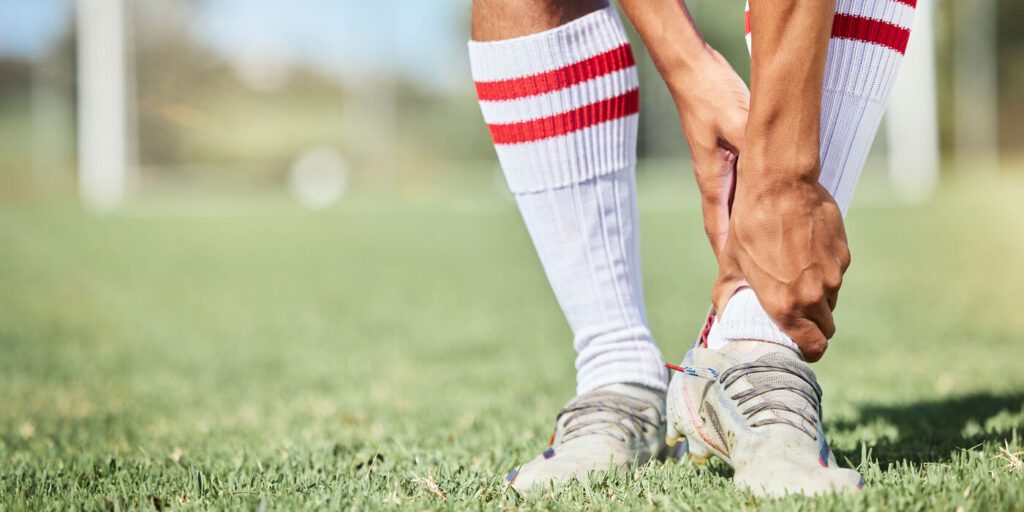
Ankle Soccer Injuries
In this article, you can read through all 5 sections or skip ahead to the topics that are most important to you. Make sure to stick around until the end, watch the video tutorial, and get your special free gift that is guaranteed to make you a better player.
- Why do my ankles hurt when i play soccer
- Common soccer ankle injuries
- How to prevent ankle injuries in soccer
- best soccer cleats to prevent ankle injuries
- How to become a better soccer player, improve faster & achieve more
I hope this article gives you all you need about ankle soccer injuries – Let’s get started!
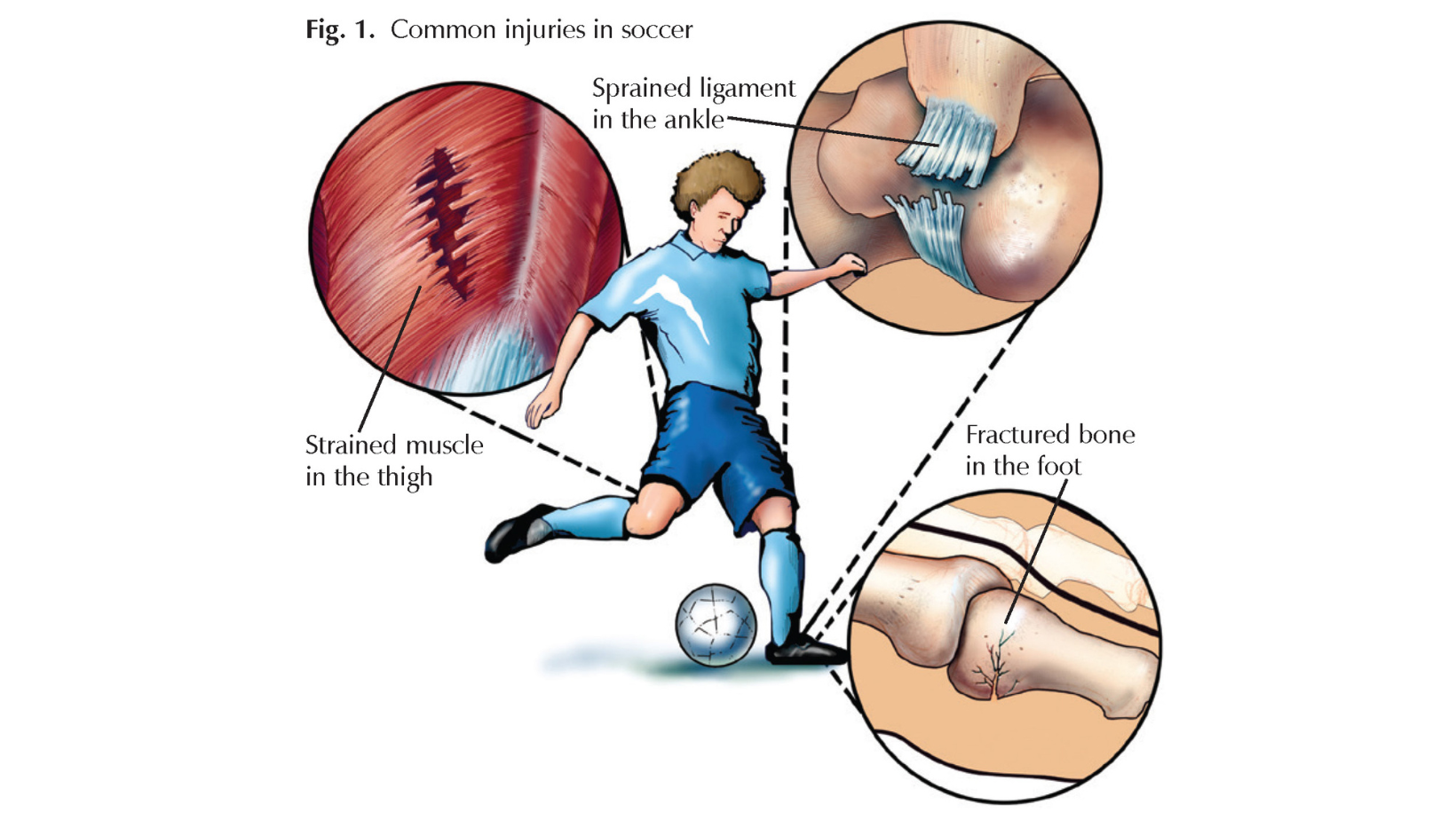
Why Do My Ankles Hurt When I Play Soccer
Ankle pain when playing soccer is a common issue that can stem from several causes. Understanding these causes is the first step towards addressing and overcoming the pain. Here are some potential reasons why your ankles might hurt and what you can do about it:
1. Overuse and Fatigue
Playing soccer involves a lot of running, cutting, and pivoting, which can lead to overuse injuries. If you’re playing frequently without enough rest, your ankle muscles and tendons can become fatigued and painful.
Solution: Make sure to incorporate rest days into your training schedule. Proper recovery is crucial. Consider cross-training with low-impact activities like swimming or cycling to give your ankles a break.
2. Improper Footwear
Wearing the wrong type of soccer cleats or shoes that don’t provide adequate support can lead to ankle pain.
Solution: Invest in good quality soccer cleats that fit well and provide proper support. If you’re unsure, visit a specialty sports store for advice on the best footwear for your foot type and playing surface.
3. Weak Ankles
Weak or unstable ankles are more prone to injuries and pain during intense activities like soccer.
Solution: Strengthen your ankles with specific exercises such as calf raises, ankle circles, and resistance band exercises. Balance exercises, like standing on one foot or using a balance board, can also help improve stability.
4. Improper Warm-Up and Cool-Down
Jumping straight into intense play without a proper warm-up can strain your ankles.
Solution: Always start with a dynamic warm-up to get your muscles ready for action. This can include activities like jogging, high knees, and butt kicks. After playing, cool down with static stretches focusing on your calves, hamstrings, and ankles.
5. Previous Injuries
If you’ve had ankle injuries in the past, they might not have healed completely or could be causing chronic issues.
Solution: If you have a history of ankle injuries, consider wearing an ankle brace during play for extra support. Additionally, physical therapy might be beneficial to address any lingering issues and strengthen the ankle.
6. Improper Technique
Sometimes, playing with poor technique or form can lead to unnecessary strain on your ankles.
Solution: Work with a coach to ensure your technique is sound, especially when it comes to running, cutting, and pivoting. Proper form can significantly reduce the risk of injury.
Remember, taking care of your body is essential for long-term success in soccer. By addressing the root causes of your ankle pain and following these solutions, you’ll be back on the field feeling stronger and more confident.
Keep pushing, stay disciplined, and don’t let this obstacle hold you back. You’ve got this!
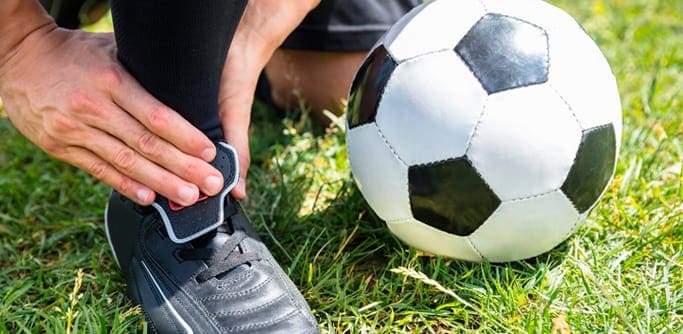
Common Soccer Ankle Injuries
Ankle injuries are common in soccer due to the sport’s dynamic and physical nature. Understanding the most common types of ankle injuries can help you prevent them and know what to do if they occur. Here are the most frequent ankle injuries in soccer:
1. Ankle Sprains
Ankle sprains occur when the ligaments around the ankle are stretched or torn. This usually happens when the foot twists or rolls beyond its normal range of motion.
Common Causes:
- Sudden changes in direction
- Uneven playing surfaces
- Collisions with other players
Symptoms:
- Pain and tenderness
- Swelling
- Bruising
- Limited range of motion
Prevention:
- Strengthening ankle muscles
- Wearing supportive footwear
- Proper warm-up and stretching
Treatment:
- Rest, Ice, Compression, Elevation (RICE)
- Ankle brace or taping
- Physical therapy
2. Achilles Tendinitis
Inflammation of the Achilles tendon, which connects the calf muscles to the heel bone. This injury is common due to overuse.
Common Causes:
- Overtraining
- Poor flexibility
- Improper footwear
Symptoms:
- Pain and stiffness along the Achilles tendon
- Swelling
- Tenderness
Prevention:
- Gradual increase in training intensity
- Regular calf stretching and strengthening
- Wearing appropriate footwear
Treatment:
- Rest and ice
- Anti-inflammatory medications
- Physical therapy
3. Fractures
Fractures in the ankle can occur from severe impacts or twists, leading to broken bones.
Common Causes:
- Direct impact (e.g., a kick to the ankle)
- Twisting or rolling the ankle
Symptoms:
- Intense pain
- Swelling
- Inability to bear weight
- Visible deformity (in severe cases)
Prevention:
- Using shin guards and proper footwear
- Avoiding risky tackles and collisions
Treatment:
- Immediate medical attention
- Casting or surgery (depending on severity)
- Long-term rehabilitation
4. Anterior Ankle Impingement
This injury involves the pinching of tissues at the front of the ankle, often due to repetitive upward motion of the foot.
Common Causes:
- Repeated ankle dorsiflexion (toes moving upwards)
- Scar tissue from previous injuries
Symptoms:
- Pain at the front of the ankle
- Swelling
- Stiffness
Prevention:
- Avoiding overuse
- Proper warm-up and stretching
- Strengthening ankle muscles
Treatment:
- Rest and ice
- Physical therapy
- Anti-inflammatory medications
5. Posterior Ankle Impingement
This occurs when the tissue at the back of the ankle is compressed, often seen in players who frequently point their toes downwards.
Common Causes:
- Repetitive plantarflexion (toes pointing down)
- Presence of an extra bone (os trigonum) in the ankle
Symptoms:
- Pain at the back of the ankle
- Swelling
- Pain during plantarflexion
Prevention:
- Avoiding excessive toe-pointing movements
- Strengthening and stretching exercises
Treatment:
- Rest and ice
- Physical therapy
- Anti-inflammatory medications
Taking Care of Your Ankles
Preventing ankle soccer injuries involves a combination of proper training techniques, wearing the right equipment, and listening to your body. Incorporate ankle-strengthening exercises into your routine, always warm up before playing, and ensure you have the right footwear.
If you do sustain an injury, seek appropriate medical advice to ensure proper healing and rehabilitation. Stay proactive, take care of your body, and you’ll keep your ankles strong and resilient on the field!
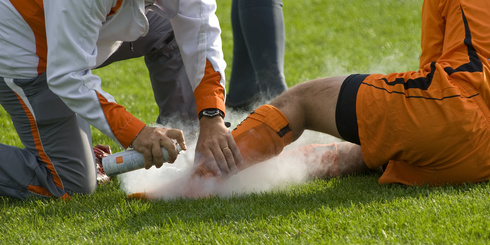
How To Prevent Ankle Injuries In Soccer
Preventing ankle injuries in soccer is essential to maintaining your performance and staying on the field. Here are some effective strategies to keep your ankles strong and resilient:
1. Strengthening Exercises
Building strength in the muscles around your ankle can provide better support and reduce the risk of injury.
- Calf Raises: Stand on the edge of a step, raise your heels, and lower them below the step level. Do 3 sets of 15-20 reps.
- Ankle Circles: Sit or stand and rotate your ankle in circles, both clockwise and counterclockwise. Perform 10 circles in each direction.
- Resistance Band Exercises: Use a resistance band to perform ankle flexion, extension, inversion, and eversion exercises.
2. Balance and Stability Training
Improving your balance and proprioception (your body’s ability to sense movement and position) can help prevent falls and awkward landings.
- Single-Leg Stands: Stand on one leg for 30 seconds, then switch legs. To increase difficulty, try it with your eyes closed or on an unstable surface like a balance board.
- Bosu Ball Exercises: Perform squats or single-leg stands on a Bosu ball to challenge your balance.
4. Ankle Bracing and Taping
Using ankle braces or taping your ankles can provide extra support, especially if you have a history of ankle injuries.
- Ankle Braces: Consider wearing a brace during practice and games, particularly if you’re prone to sprains.
- Taping: Learn how to properly tape your ankles or have a professional do it to add stability.
5. Warm-Up and Cool-Down
A proper warm-up and cool-down routine can prepare your muscles and joints for the demands of soccer and reduce the risk of injuries.
- Dynamic Warm-Up: Include activities like jogging, high knees, butt kicks, and dynamic stretches for 10-15 minutes before playing.
- Cool-Down: Perform static stretches focusing on your calves, hamstrings, and ankles for 10-15 minutes after playing.
6. Gradual Progression
Avoid sudden increases in the intensity or duration of your training, which can overstrain your muscles and ligaments.
- Progress Slowly: Increase your training load gradually, whether it’s running distance, speed drills, or overall playing time.
- Rest and Recovery: Incorporate rest days into your routine to allow your body to recover and repair.
7. Proper Technique
Using the correct techniques while playing can reduce unnecessary stress on your ankles.
- Running Form: Focus on proper running mechanics, landing on the balls of your feet and keeping your knees slightly bent.
- Cutting and Pivoting: Learn the right way to change direction quickly and efficiently to avoid awkward movements that could lead to sprains.
8. Listen to Your Body
Pay attention to any signs of discomfort or pain in your ankles and address them promptly.
- Don’t Ignore Pain: If you feel pain or discomfort, take a break and assess the situation. Continuing to play through pain can worsen the injury.
- Seek Professional Help: If you experience persistent pain or suspect an injury, consult a healthcare professional for a proper diagnosis and treatment plan.
By incorporating these preventive measures into your routine, you can significantly reduce the risk of ankle injuries and keep yourself in top form on the soccer field. Stay proactive, listen to your body, and take care of your ankles to enjoy the game to the fullest!
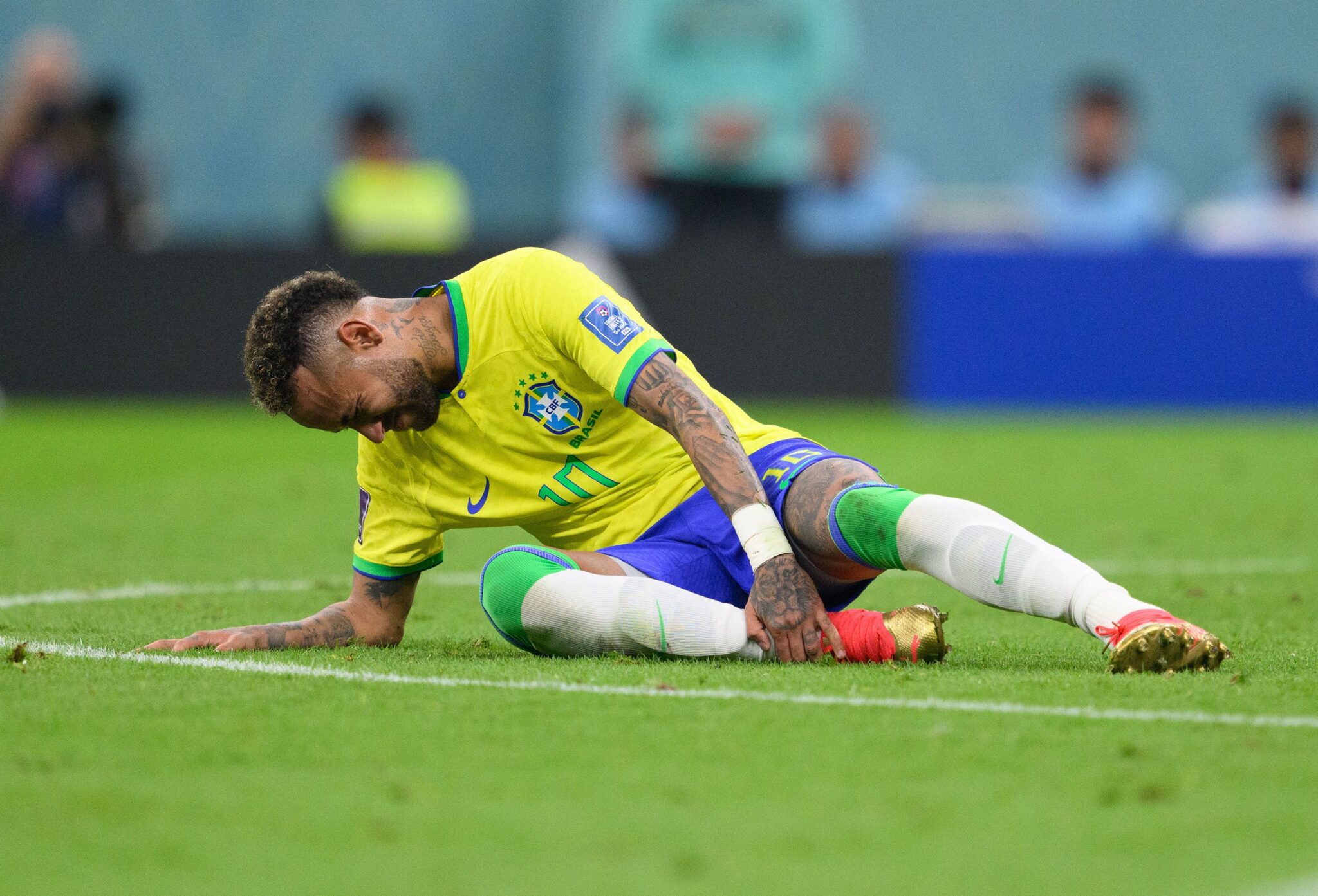
Best Soccer Cleats To Prevent Ankle Injuries
Choosing the right soccer cleats can make a significant difference in preventing ankle injuries. While no cleat can completely eliminate the risk, certain features can provide better support, stability, and comfort. Here are some of the best soccer cleats to help prevent ankle injuries:
1. Nike Phantom GT2 Elite
The Nike Phantom GT2 Elite is designed with an emphasis on support and precision.
- Features:
- Dynamic Fit Collar: Provides ankle support and a secure fit.
- Flyknit Construction: Offers a snug, sock-like fit for enhanced stability.
- Textured Upper: Improves ball control and grip.
2. Adidas Predator Freak+
The Adidas Predator Freak+ is known for its innovative design and superior support.
- Features:
- DemonSkin Technology: Rubber spikes on the upper for better ball control and grip.
- Primeknit Collar: Ensures a snug, supportive fit around the ankle.
- Split Sole Plate: Enhances flexibility and movement while providing stability.
3. Puma Future Z 1.1
Puma Future Z 1.1 cleats are designed for agility and support, making them a good choice for preventing ankle injuries.
- Features:
- FUZIONFIT+ Compression Band: Provides adaptive support and a secure fit around the midfoot and ankle.
- Dynamic Motion System: Offers stability and support during quick movements.
- GripControl Pro: Enhances ball control and precision.
4. Under Armour Magnetico Pro
Under Armour Magnetico Pro cleats are built for comfort and support, reducing the risk of ankle injuries.
- Features:
- ClutchFit Technology: Wraps around your foot for a snug, supportive fit.
- FormTrue Upper: Provides a soft, flexible feel while maintaining support.
- Charged Cushioning: Absorbs impact and provides responsive support.
Tips for Choosing the Right Cleats:
- Fit: Ensure the cleats fit snugly without being too tight. A proper fit can prevent unnecessary movement within the shoe, reducing the risk of ankle injuries.
- Ankle Support: Look for cleats with features like dynamic fit collars, compression bands, or high-top designs that offer additional ankle support.
- Stability: Choose cleats with a stable soleplate and good traction to prevent slipping and provide a solid base for quick movements.
- Comfort: Comfortable cleats with adequate cushioning can reduce the strain on your ankles during play.
- Playing Surface: Select cleats appropriate for the surface you’ll be playing on (e.g., firm ground, soft ground, artificial turf).
By selecting cleats that offer a combination of fit, support, and stability, you can help reduce the risk of ankle injuries and stay focused on your game. Always remember to break in new cleats gradually to allow your feet to adjust and to minimize the risk of blisters or discomfort.
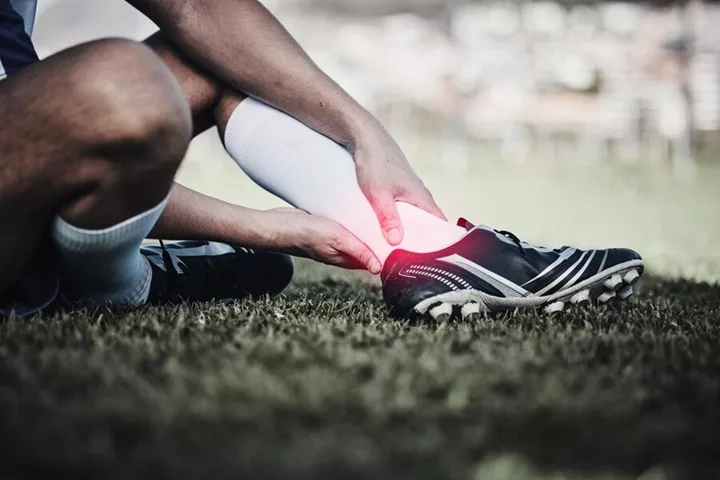
Soccer Ankle Injuries
Ankle injuries can be a frustrating setback in your soccer journey, but with the right knowledge and proactive measures, they are largely preventable.
By incorporating strengthening exercises, balance training, proper warm-ups, and using supportive footwear, you can significantly reduce the risk of injury. Selecting the right cleats, designed to provide stability and support, further enhances your protection on the field.
Remember, taking care of your body is essential for long-term success in soccer. Stay informed, stay proactive, and keep your ankles strong and resilient, so you can continue to enjoy the game at your best.
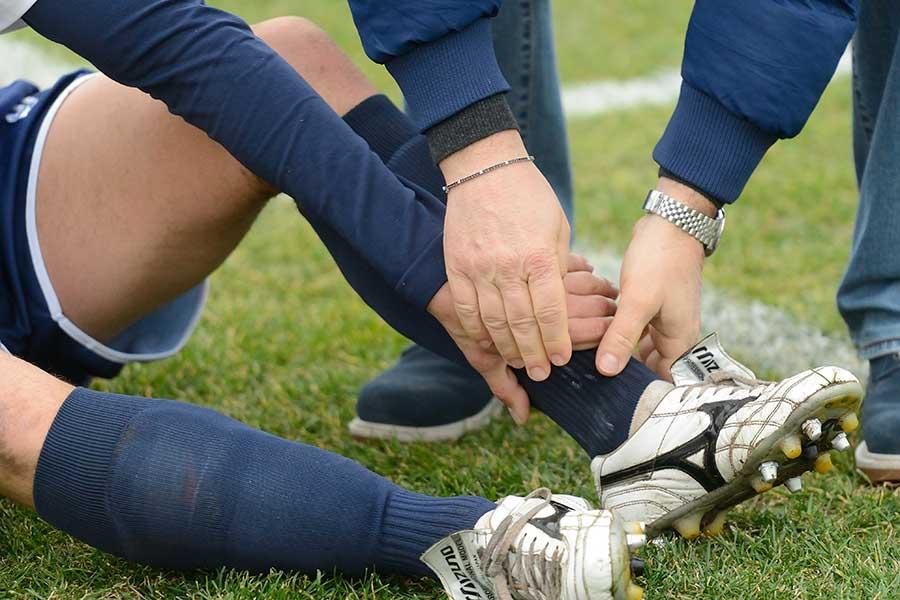
Common Questions
Here are some common questions related to ankle soccer injuries:
How long does it take for a sprained ankle to heal in soccer?
The healing time for a sprained ankle depends on its severity:
- Grade 1 sprain (mild): Typically heals in 1-2 weeks with rest, ice, compression, and elevation (RICE).
- Grade 2 sprain (moderate): May take 3-6 weeks, often requiring physical therapy.
- Grade 3 sprain (severe): Can take several months and might need a brace or even surgery.
Proper rest and rehabilitation are crucial to prevent reinjury and get back on the field safely.
Can I play soccer with an ankle injury?
Playing soccer with an ankle injury is not advised, as it increases the risk of further damage. Even mild sprains can worsen with excessive strain. If you feel discomfort or instability, it’s best to rest or consult a medical professional. However, after appropriate recovery and clearance from a doctor, returning to soccer gradually with a brace or tape for support can be safe.
Should I wear an ankle brace while playing soccer?
Wearing an ankle brace while playing soccer can provide additional support and reduce the risk of reinjury, especially if you’re recovering from a sprain. Athletes with a history of weak ankles or frequent sprains often benefit from using braces or taping during games and practices. However, strengthening the surrounding muscles over time is just as important as relying on a brace.
How do I know what grade my ankle sprain is?
The grade of an ankle sprain depends on the extent of the ligament damage:
- Grade 1 (mild): Minor swelling, tenderness, and slight instability. You can usually walk with minimal pain.
- Grade 2 (moderate): Swelling, bruising, and significant pain. Walking or weight-bearing is difficult.
- Grade 3 (severe): Severe swelling, bruising, and joint instability. Walking may be impossible without assistance.
Consult a healthcare provider for a proper diagnosis, often confirmed by a physical exam or imaging like an X-ray or MRI.
Why do I keep spraining my ankle in soccer?
Recurrent ankle sprains often occur due to:
- Weak or underdeveloped muscles around the ankle.
- Poor balance or coordination after an initial injury.
- Inadequate rehabilitation or returning to play too soon after a previous sprain.
- Wearing improperly fitting cleats or playing on uneven surfaces.
To prevent future sprains, focus on strengthening your ankles, improving balance, wearing well-fitted cleats, and considering taping or bracing during play.
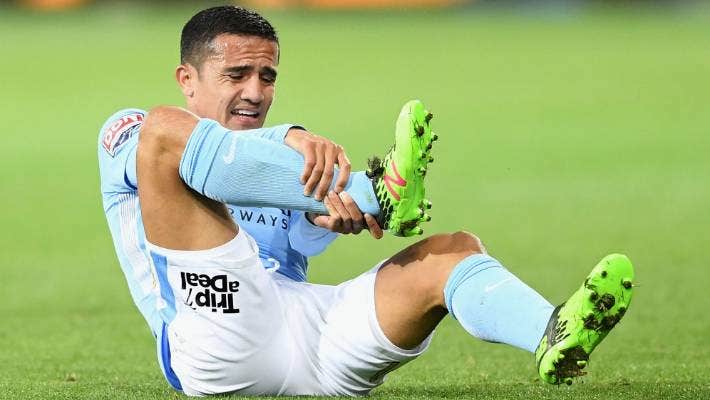
SOCCER PLAYERS
Want to become a better soccer player?
Watch this 3-minute video about discovering your true potential
Learn how to improve your skills, mindset, soccer IQ, and fitness—no matter your level. Start playing with confidence, earning respect, and impressing coaches today.
About Coach Dylan
I used to struggle with confidence in soccer, feeling slow, weak, and unmotivated. Coaches overlooked me, and friends made fun of my skills. At one point, I even quit.
But I decided to take control of my development. Through hard work, I transformed my game, earned league titles, awards, a college scholarship, and international caps.
Now, I share my lessons and help others improve through my YouTube channel (1/2 million subscribers), soccer coaching and personal training.

How To Play Soccer Better
Struggling to make progress in soccer or stay organized with your training?
The Soccer Success Planner will help you stay focused, motivated, and increase your chances of achieving your goals in soccer.
Success doesn’t happen accidentally. Use it to set clear goals, create a plan of action, and take control of your future. Learn more about the Soccer Success Planner.
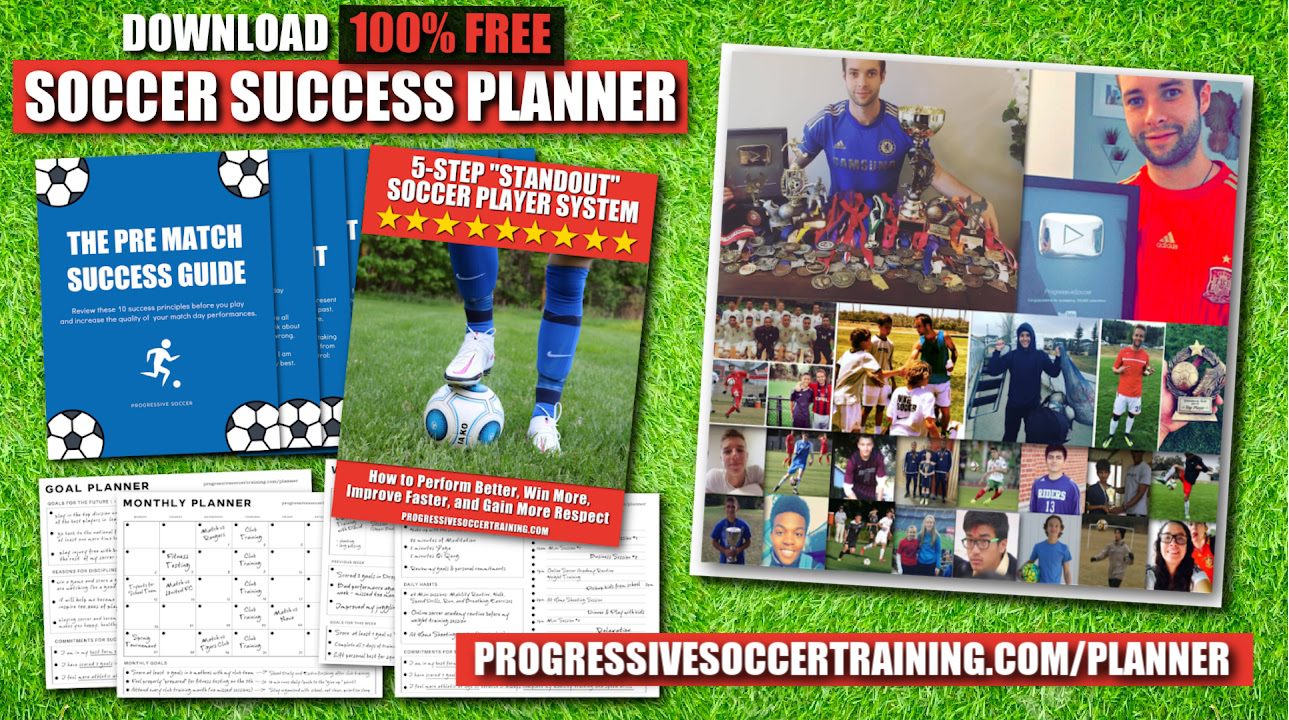
How To Become A Better Soccer Player
Struggling to improve in soccer or unsure how to train effectively? Want to stand out and earn respect from teammates and coaches?
The Online Soccer Academy will get you better results in less time.
Thousands of players have already transformed their game in just 60 days. Learn more about how the online soccer academy.
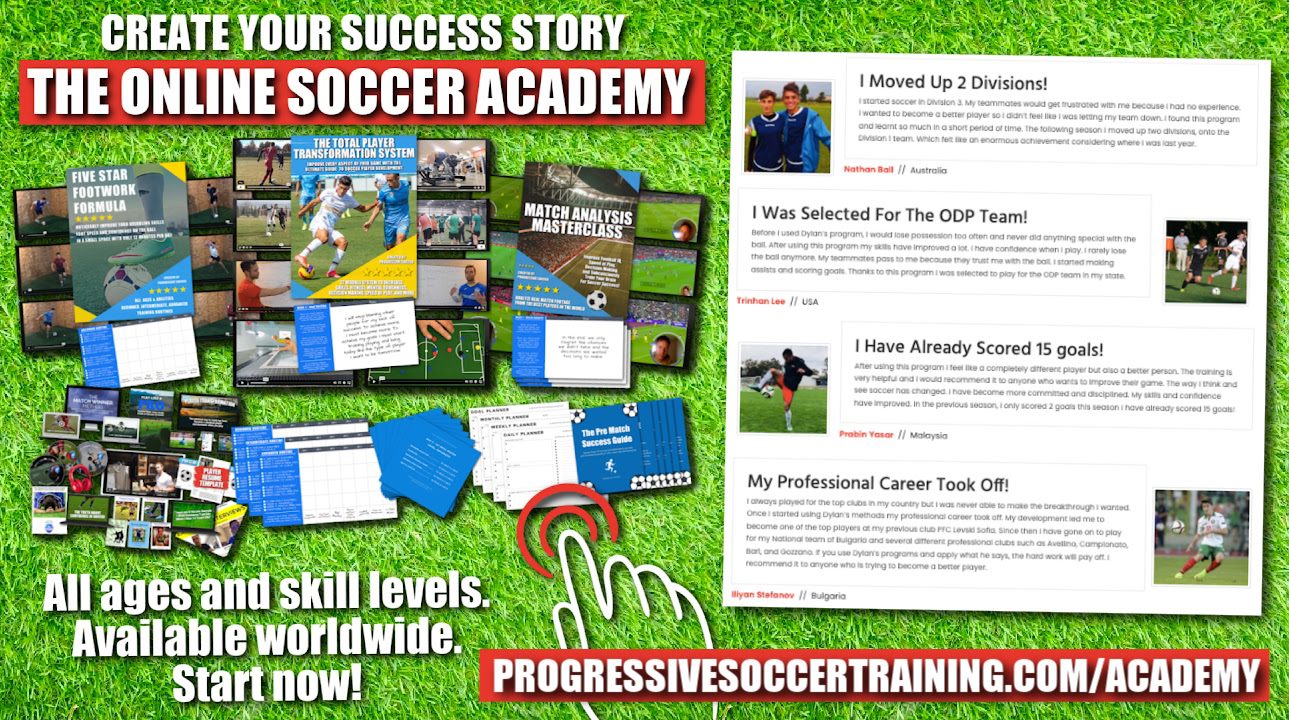
Related Posts
Here are some related posts to help you gain more knowledge and helpful advice:
How To Become A Better Soccer Player in 1 Day
From Failure To Top Goal Scorer
Coach Dylan
Progressive Soccer
Thank you for reading this article:
Ankle Soccer Injuries – Complete Guide (2025)
